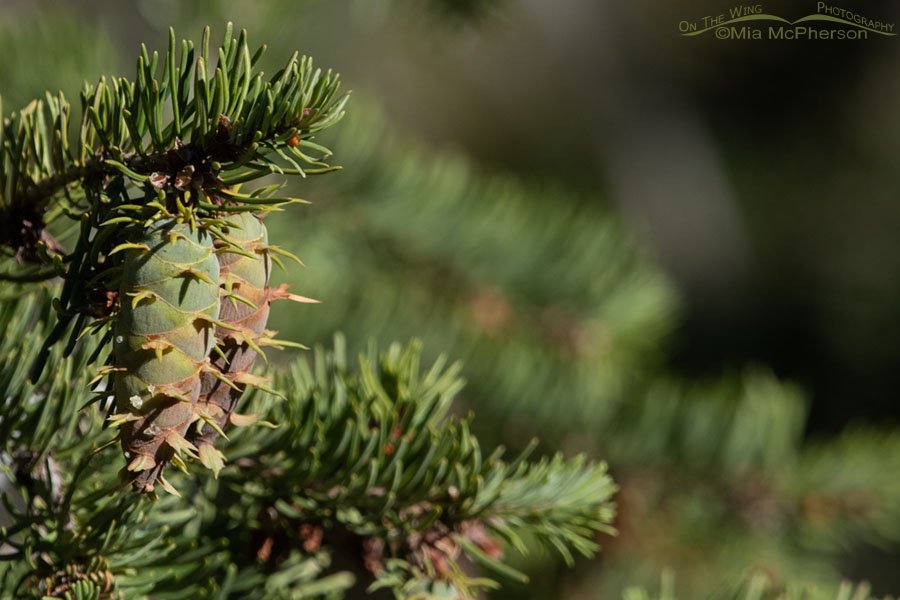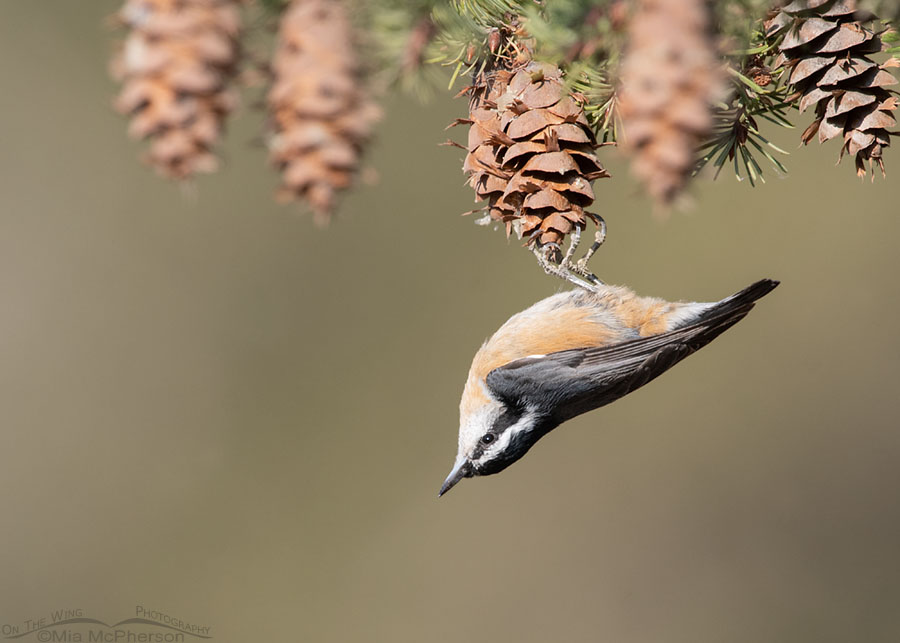 Drought stressed Douglas Fir cones – Nikon D810, f7.1, 1/800, ISO 500, Nikkor 500mm VR with 1.4x TC, natural light
Drought stressed Douglas Fir cones – Nikon D810, f7.1, 1/800, ISO 500, Nikkor 500mm VR with 1.4x TC, natural light
Last week while out in the sky island mountains of the West Desert I was paying attention to more than just the birds I found. I paid particular attention to the trees and shrubs I saw. I noticed that the Red Osier Dogwoods produced less berries this year than last which means less food for migrating birds. That was most likely caused by our exceptional drought here in northern Utah.
I also looked over the Douglas Fir trees I see up in those mountains and while there were plenty of cones on the trees the cones themselves are shorter than they were last year. The cones don’t seem to be ripening in the same way that I have noticed in previous autumns.
Drought stressed Douglas Fir trees will produce what is called a “stress crop” of cones which is what I believe is happening to the firs in this location. Higher up the slopes in places that can only be gotten to on foot I can see Douglas Firs that have lost their needles and some that are dead. The death of these large fir trees from drought doesn’t happen rapidly but observant people notice it.
According to the latest forecasts our drought may go from bad to worse because of the La Niña. It is already horribly dry here in northern Utah.
 Red-breasted Nuthatch clinging to a fir cone – Nikon D500, f7.1, 1/800, ISO 640, Nikkor 500mm VR with 1.4x TC, natural light
Red-breasted Nuthatch clinging to a fir cone – Nikon D500, f7.1, 1/800, ISO 640, Nikkor 500mm VR with 1.4x TC, natural light
Many bird species depend on the seeds produced by Douglas Firs including Red-breasted Nuthatches. One of the reasons I pay close attention to the cones is because when the seeds are ripe I know I can count on seeing and photographing Red-breasted Nuthatches and other birds eating and caching the seeds.
What about the other trees that are stressed from this drought? Oaks produce acorns that deer and other mammals feed on. Our legislators will put a $50.00 bounty on coyotes to protect the deer population but will ignore science to do the same.
How much longer can these Douglas Firs survive in extreme drought conditions? When they are gone what will the birds that depend on their seeds to survive do?
Time will tell. With the combination of the mega drought plus lower water levels in the Great Salt Lake which means less lake effect snow falls I know that there is trouble ahead where I currently live. I am 100% certain of that.
If trees screamed out loud when they were dying or stressed would our climate change denying lawmakers in Utah listen or would they just stuff plugs in their ears? Knowing them I would say they would use the earplugs.
Mia
Click here to see more of my Red-breasted Nuthatch photos plus facts and information about this species. Click here to see more of my flower, shrub and tree photos.


Thanks for this thoughtful post, Mia. The High County News has some good news re barbed-wire fences:
Behind the wire with a fence ecologist. How researchers are using science and data to help wildlife:
https://www.hcn.org/issues/53.10/north-wildlife-behind-the-wire-with
I often wonder if the reason I am seeing more birds in urban areas is due to drought in the mountains and foothills. Humans water their patch of green, alleviating the intensity of the drought, therefore trees and bushes producing more food for the birds.
A main driver of the drought
Lets appreciate this, and any public “calling attention to” our human part and responsibility in this shared disaster.
We lost lots of trees in our last drought. And the one before it. And with those trees we lost birds, we lost insects, we lost animals… Which hurts my head and my heart.
This breaks my heart. We will keep fighting for change.